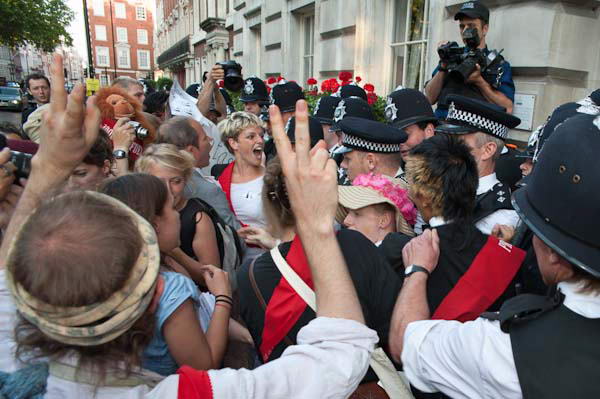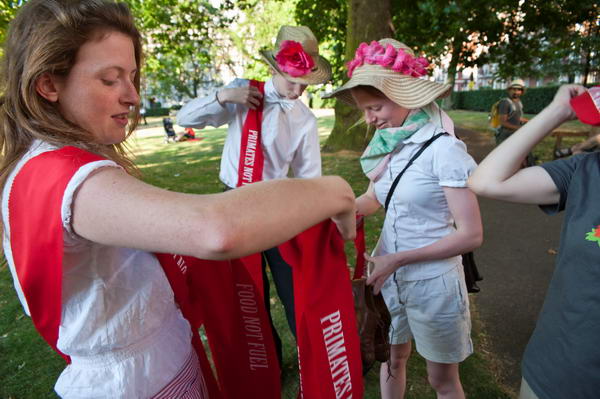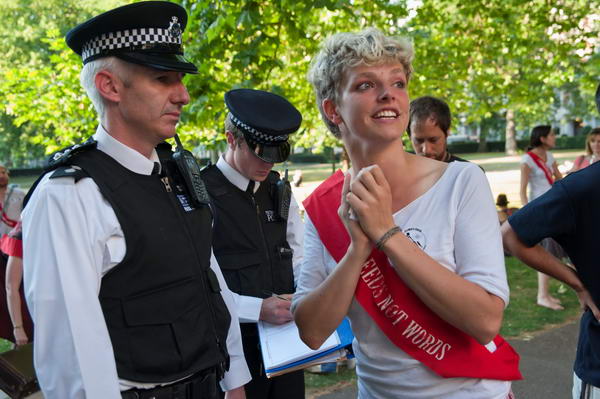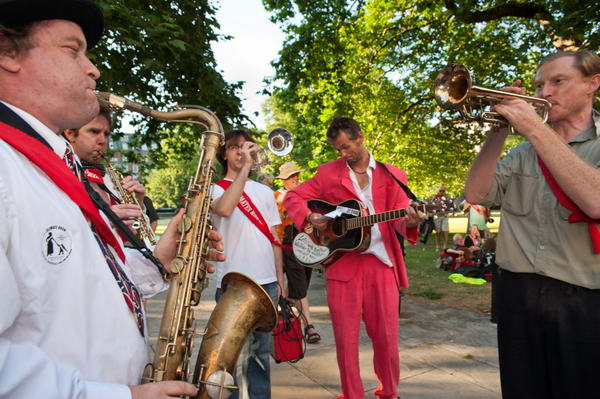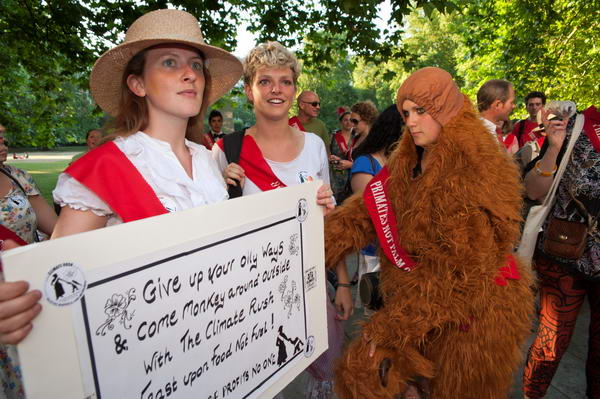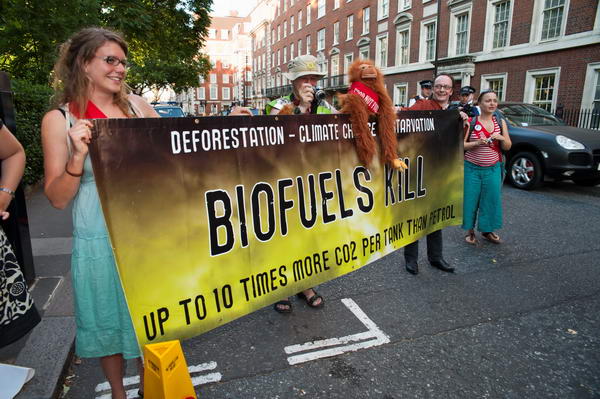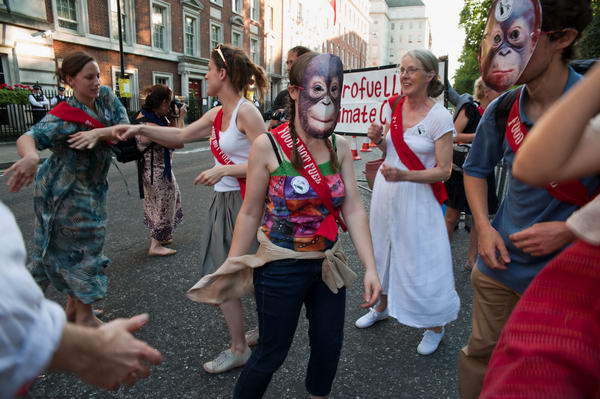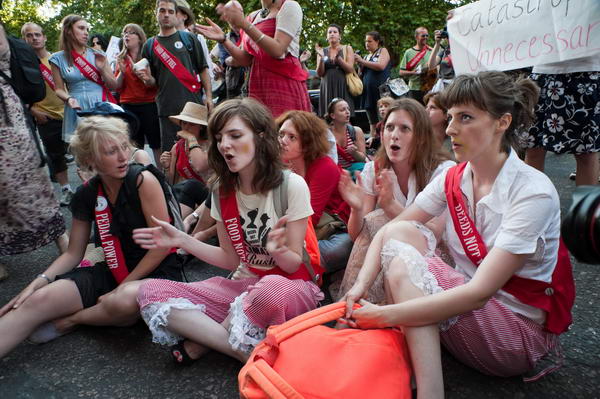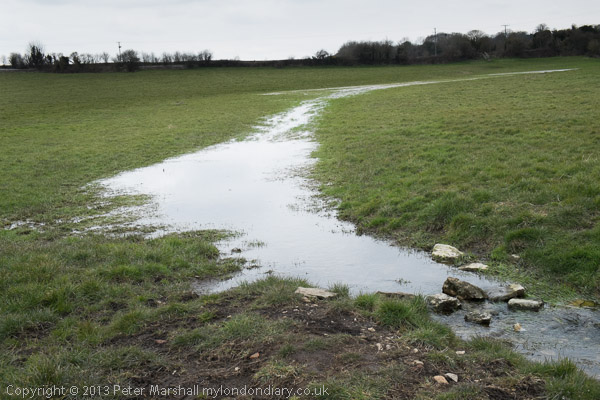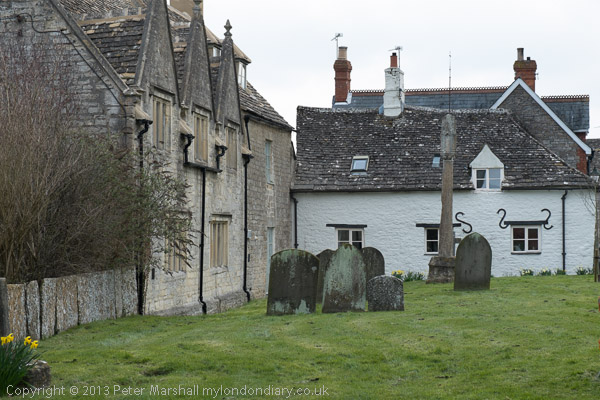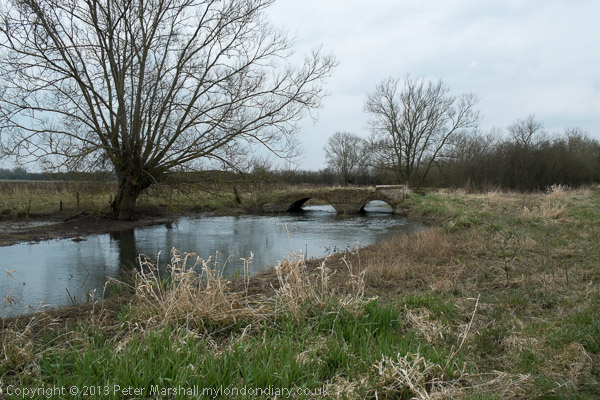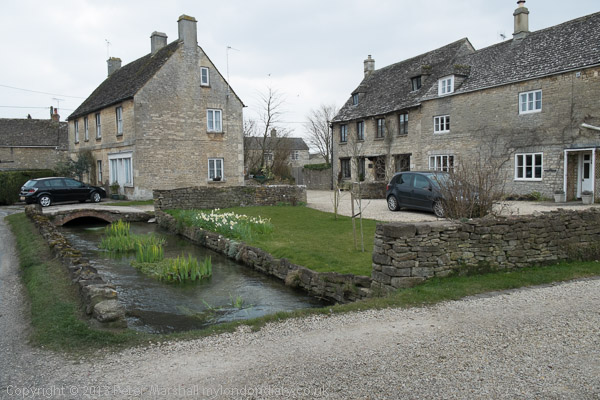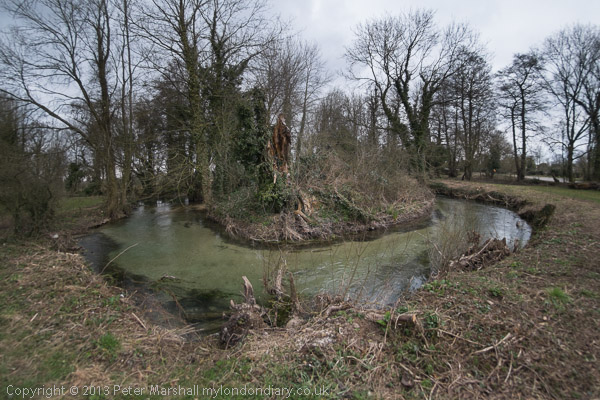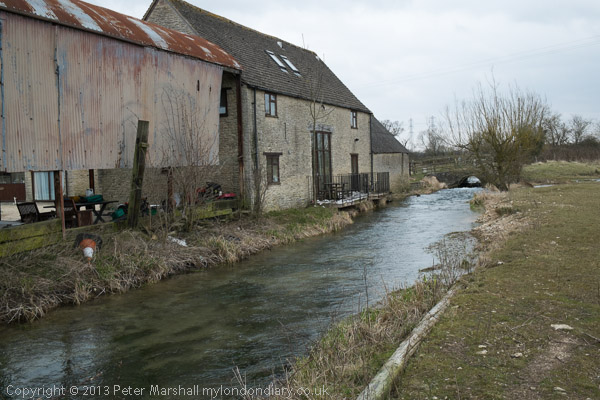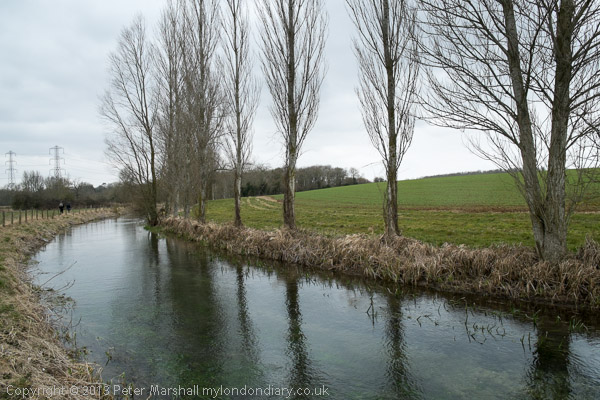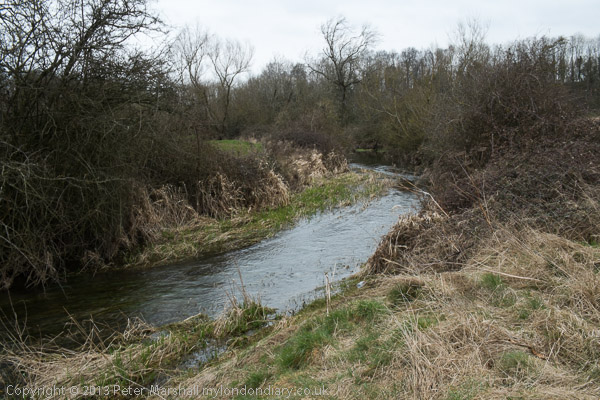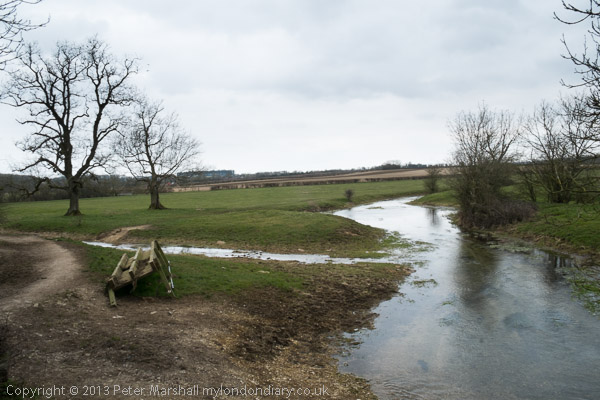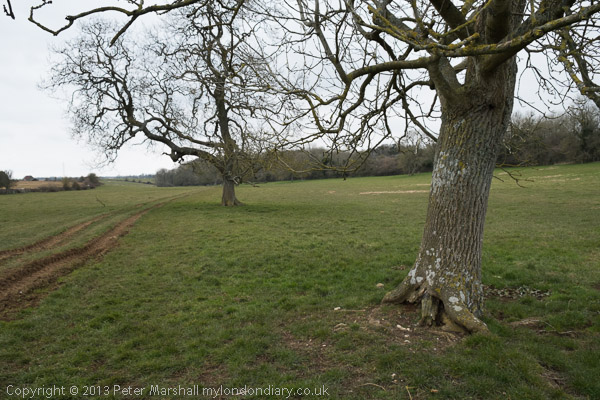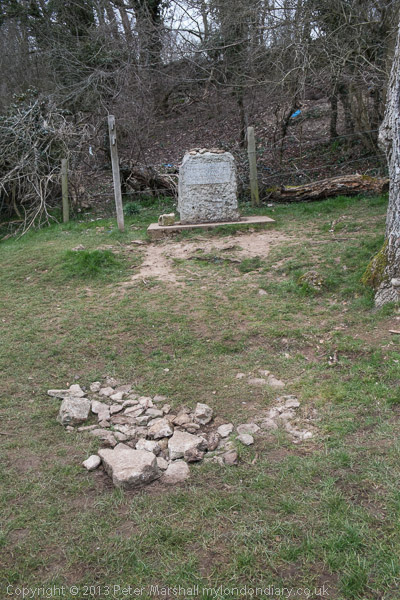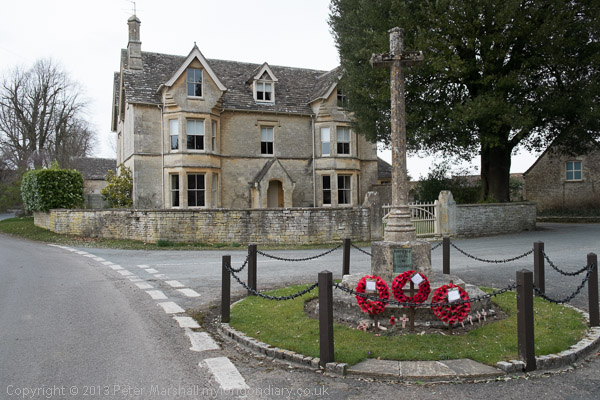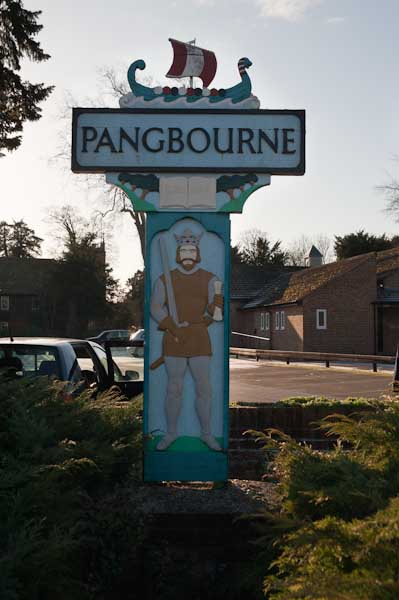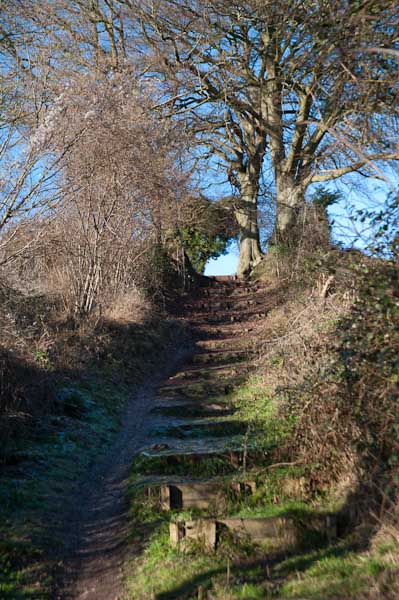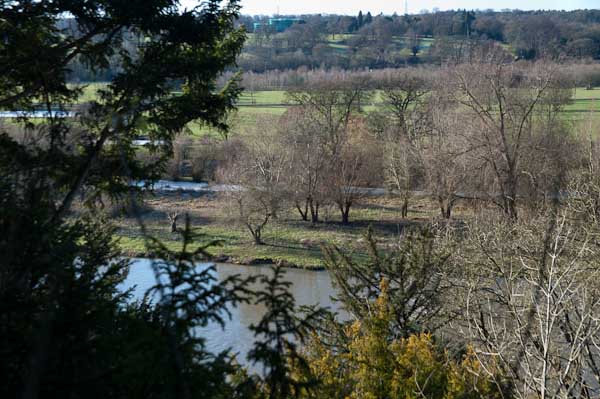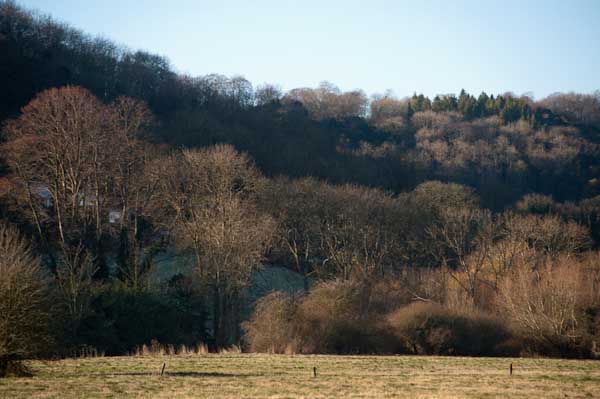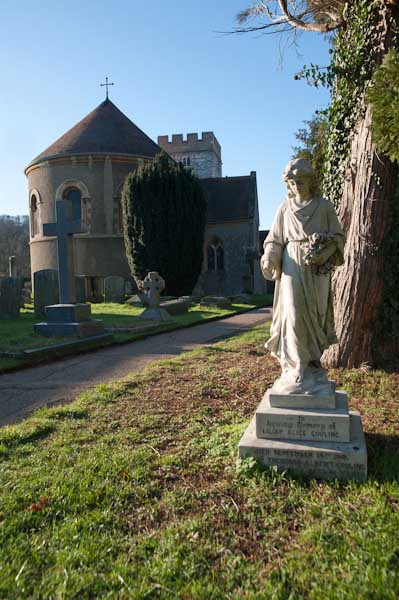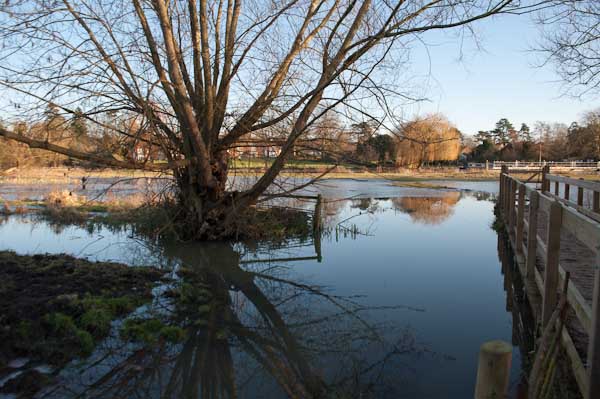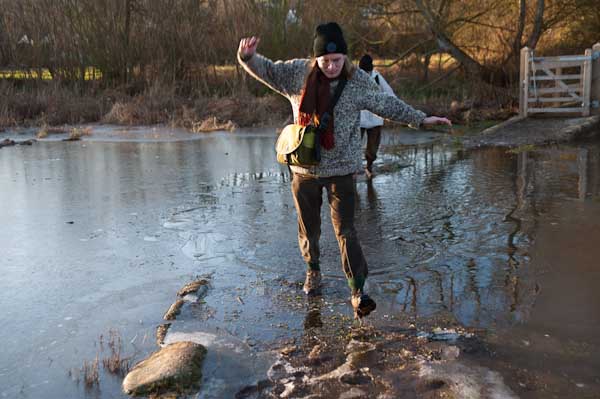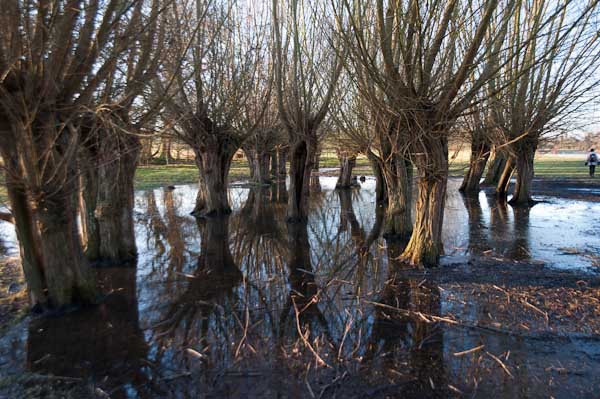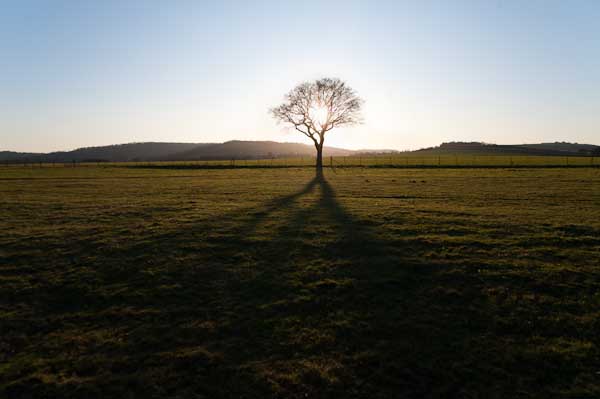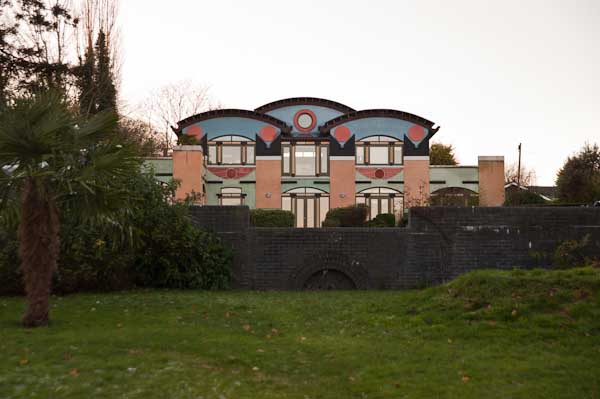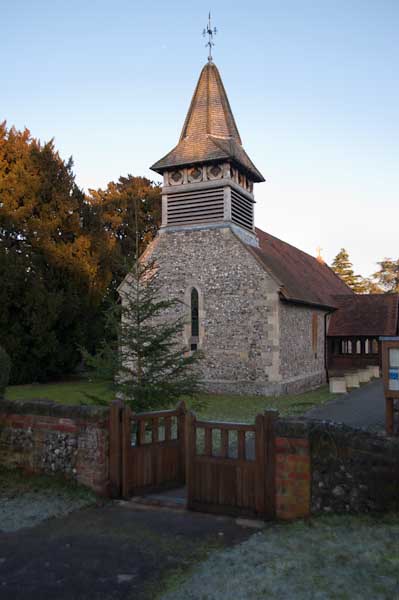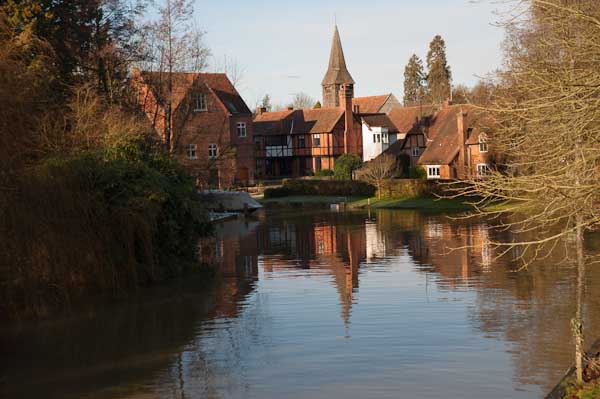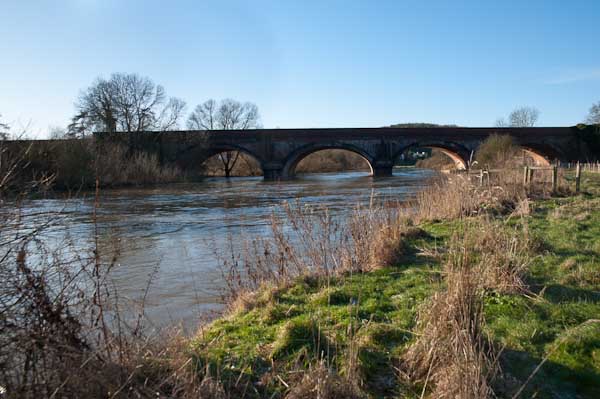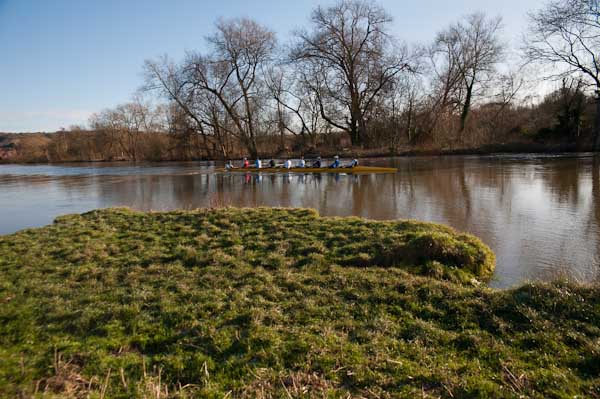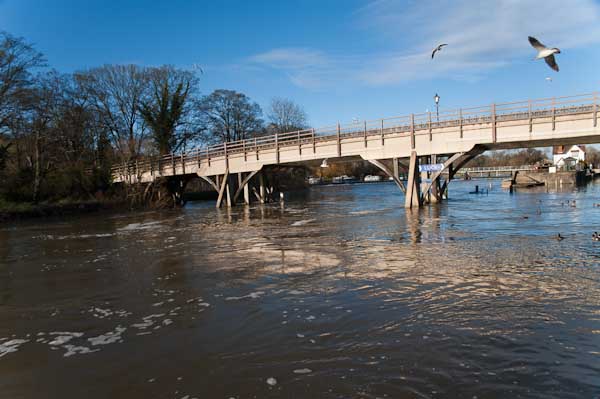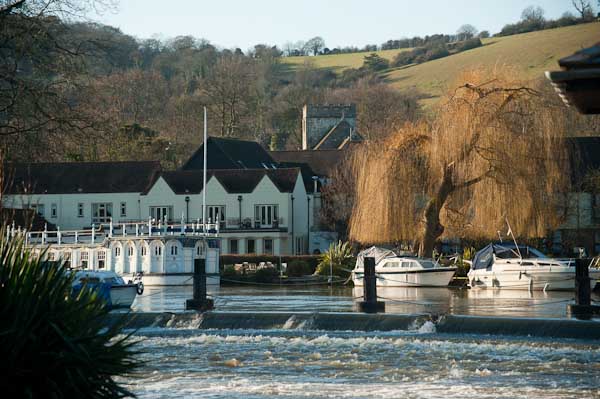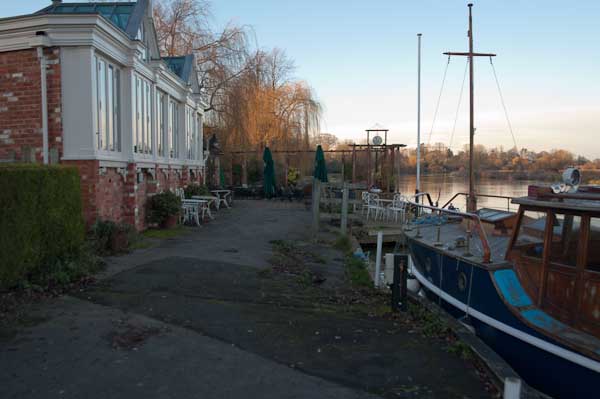Violence Against Women, Charlie X & MI6 – Friday 14th February 2014 was the second One Billion Rising event with an event in Trafalgar Square. I walked away down Whitehall to photograph Charlie X protesting over climate chaos and then went to MI6 at Vauxhall Cross for a protest on the 12 anniversary of the illegal transfer of Shaker Aamer from torture at a US airbase in Afghanistan to Guantanamo before returning home.
One Billion Rising – End Violence Against Women – Trafalgar Square
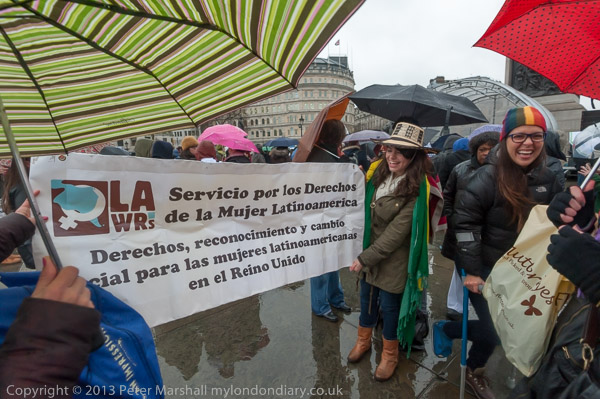
People had come to strike, dance and rise in defiance against the injustices suffered by women at the second One Billion Rising event, begun as a call to action against the UN figure that 1 in 3 women in the world will be beaten or raped.

This was an initiative by playwright and activist Eve Ensler (known for her play The Vagina Monologues), and her organisation V-Day, and the first event in 2013 had involved over 10,000 events worldwide. In 2014 things were happening in 168 countries.
The Home Office say there are an average of 85,000 women raped each year in England and Wales, along with 400,000 sexually assaulted and that 1 in 5 women experience some form of sexual violence in their adult life.

“The event started with a brief photo-op which was just lots of people posing behind a banner. I almost missed it, but I wouldn’t have really missed much. I didn’t recognise many of them, though they may well have been celebreties.
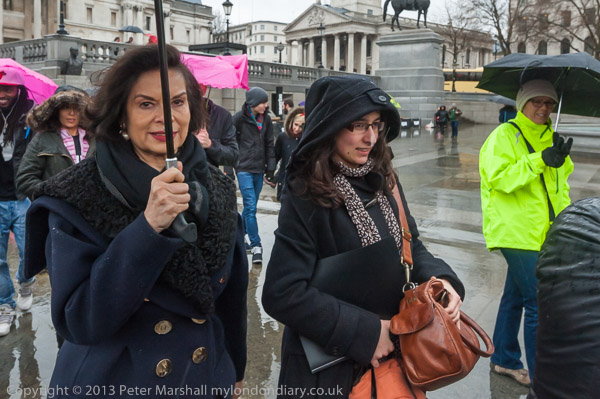
One I did know was Bianca Jagger, who I’ve photographed on various occasions. But you many well spot others you know.”

Afterwards there was some dancing on the stage and I photographed some of those who had come to the event. I left before the speeches.
More pictures at One Billion Rising – End Violence Against Women
Charlie Chaplin Climate Chaos – Downing St,
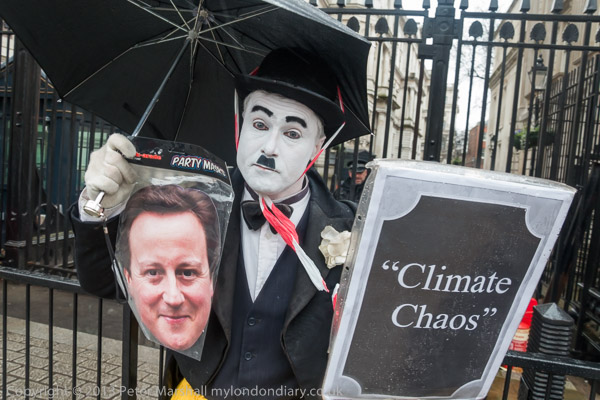
At the gates to Downing Street I met Charlie Chaplin mime Charlie X holding the head of PM David Cameron protesting against climate chaos and in solidarity with those who are flooded out and with those fighting fracking around the UK. His message was ‘Frack This for a Larf!
It was as his e-mail earlier had indicated, “crap weather“, cold and wet with the latest in a series of storms hitting London, and that this was the perfect context for a protest drawing attention to a protest over climate chaos and in solidarity with those people being flooded out across the country.
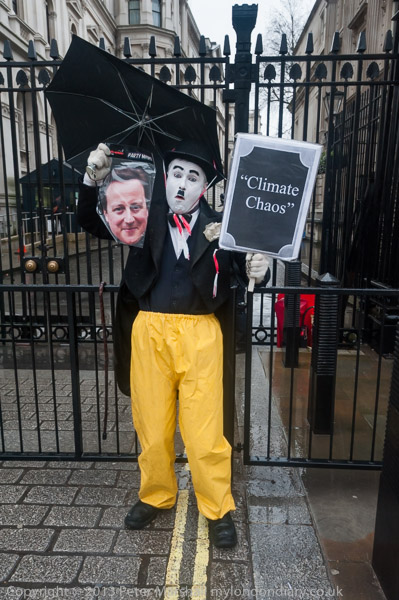
I had come up to London not knowing if my home would be flooded by the time I returned. Parts of the streets outside had been under a few inches of dirty water as I walked to the station and the ditch at the back of our garden had overflowed a couple of hundred yards downstream.
The local drains were all flooded and we were having to go to friends in the next street to wash etc – or rely on public services further afield. I was pleased to find the situation no worse when I finally arrived home but it was another week before Thames Water managed to get our sewage flowing again.
‘Justice Demands the Truth’ Vigil – MI6, Vauxhall Cross
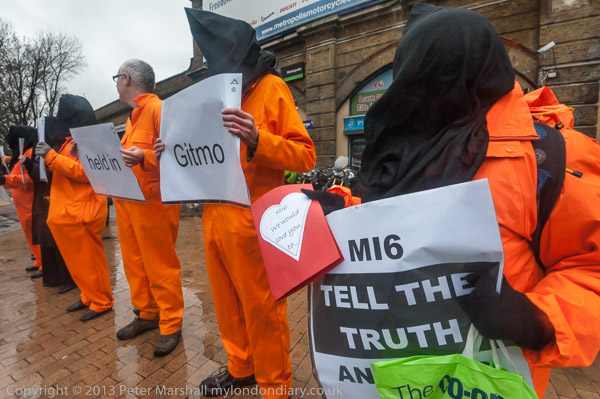
“On the 12th anniversary of Shaker Aamer’s illegal rendition to Guantanamo, a protest called on MI6 to tell the truth and stop working to stop him being returned to his family in London, and handed in a Valentine card to MI6 head Sir John Sawer.”

It was on St Valentine’s Day 2002 that Shaker Aamer “was illegally and forcibly transferred from Bagram Airbase, where he had been tortured as MI6 agents looked on and helped with his interrogation to Guantanamo, where his imprisonment without trial and with frequent and regular ill-treatment and torture continues to this day.”

Aamer’s home and family were a short distance away in Battersea but he had been captured by bandits when working for a charity in Afghanistan and sold the the US authorities there.

On the same day in 2002, his youngest son was born in London, a son living with his family in Battersea who has never seen his father. In 2014 Aamer was still being held in chains in solitary confinement and his health was in danger after a lengthy hunger strike.

The US could find no evidence of his involvement in terrorism and he was cleared for release in 2007 – but they wanted to send him back to Saudi Arabia where he would have conceniently disappeared without trace.
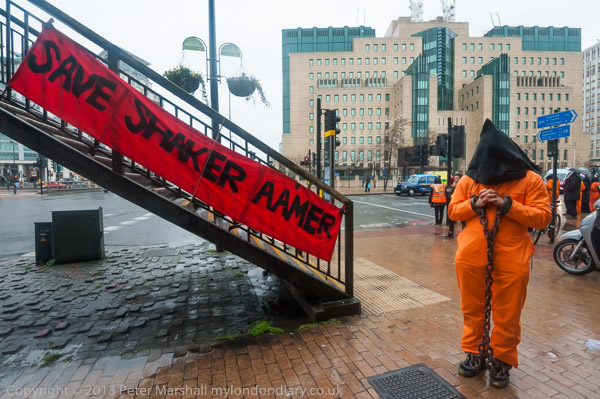
Aamer had married a British woman and been granted residency to live in the UK and was applying for citizenship before his capture. His supporters were convinced that he was only still being held in prison “because of various lies told by British security agencies MI5 and MI6 to our government, which Jack Straw, Foreign Secretary from 2001-6 and later Secretary of State for Justice apparently believed.”
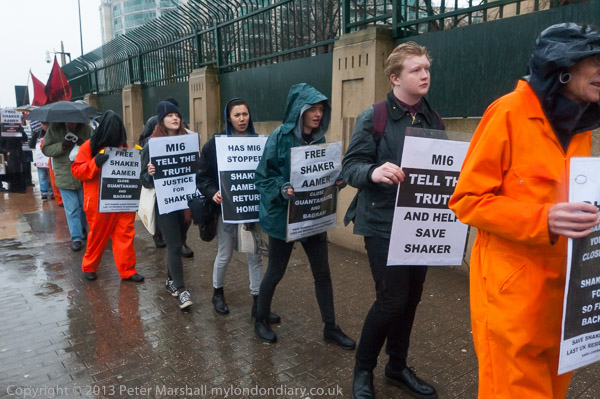
Those lies were told because both US and UK intellegence agencies would be highly embarassed by the evidence he would give about his continued torture in Guantanamo and his torture at Bagram.

Security at the MI6 building refused to accept the Valentines card they tried to present, but eventually they pushed it through a gap in the gate. But Shaker was only finally released and able to return to the UK on 30th October 2015.
You can read more about the protest and see many more pictures on My London Diary at ‘Justice Demands the Truth’ Vigil.
Flickr – Facebook – My London Diary – Hull Photos – Lea Valley – Paris
London’s Industrial Heritage – London Photos
All photographs on this page are copyright © Peter Marshall.
Contact me to buy prints or licence to reproduce.
